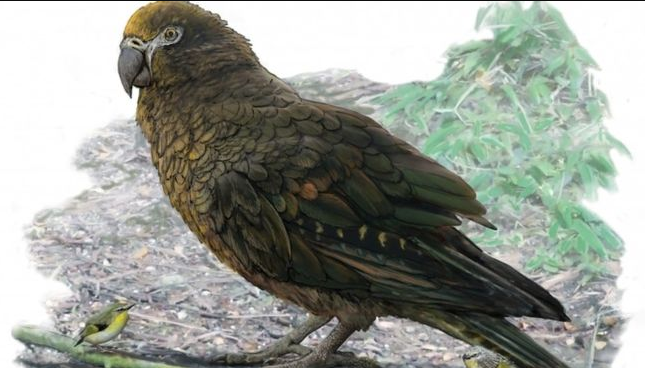New research has identified a massive parrot that went across New Zealand around 19 million years ago and was 1 m tall, more than half the typical human height.
The parrot remains were discovered near St Bathans, in southern Otago, New Zealand.
Because of its size, unlike most birds today, the parrot is assumed to have been flightless and carnivorous.
Bird research was published in Biology Letters on Tuesday.
The bird would have been twice as heavy as the kākāpo, the largest previously recognized parrot, weighing little more than one stone (7 kg).
Professor Trevor Worthy, a Palaeontologist at the University of Flinders in Australia and lead writer of the research, informed the BBC “There are no other gigantic parrots in the globe.” “It’s very important to find one.”
In recognition of its extraordinary size and strength, Palaeontologists have labeled the new species Heracles inexpecatus.
The bones–which were originally thought to be of an eagle or duck–were stored for 11 years before a group of paleontologists had reanalyzed them previously this year.
According to Professor Worthy, one of his students accidentally discovered the parrot’s bones while working on a study project in his laboratory.
Mike Archer of NSW University of Paleontology said that the beak of the parrot was so large it “could break open anything it fenced.”
The professor said the parrot “can have had more than standard parrot, maybe even other parrots,” to the AFP news agencies.
As it had no predators, however, Professor Worthy informed the BBC that it was unlikely to be aggressive.
He said: “It was likely on the floor, walking around and eating mainly seeds and nuts.
According to Paul Scofield, senior curator of natural history at Canterbury Museum, researchers are “putting our money on it being flightless”.
New Zealand was once home to the Moa, a now-extinct animal with an estimated altitude of 3,6 m (11 ft 8 in). The discovery of large birds is not unusual.
Saint Bathans is an area notable for its abundance of Miocene fossils, which spanned from 23 million to 5.3 million years ago, and is where the leg bones of this large parrot were discovered.
“Nobody has ever discovered an extinct gigantic parrot until now–everywhere, however,” Prof. Worthy said to AFP.
“We have been excavating these fossil deposits for 20 years, and each year reveals new birds and other animals… no doubt there are many more unexpected species yet to be discovered in this most interesting deposit.”

